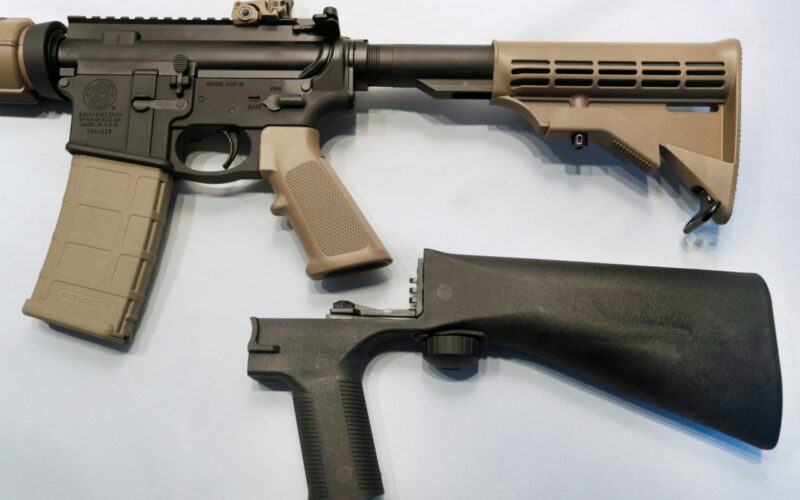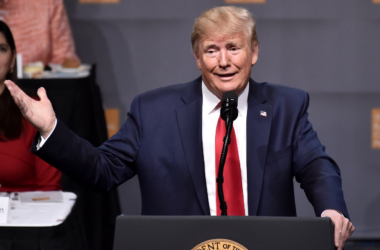The recent Supreme Court ruling overturning the federal ban on bump stocks has raised concerns among gun safety advocates and government officials about the potential for increased availability of rapid-fire gun accessories. This decision could undermine President Biden’s ongoing efforts to regulate devices that enable semiautomatic rifles to mimic the firing speed of machine guns.
Background and Ruling
In a landmark ruling last week, the Supreme Court struck down the Trump administration’s ban on bump stocks, a device that facilitates semiautomatic rifles to fire at rates comparable to machine guns. This ban had been implemented following the tragic 2017 mass shooting in Las Vegas, where a gunman used bump stocks to kill 60 people at a concert, the deadliest mass shooting in modern U.S. history.
Justice Clarence Thomas, writing for the court’s 6-3 conservative majority, stated that “a semiautomatic rifle equipped with a bump stock is not a ‘machine gun’ because it cannot fire more than one shot ‘by a single function of the trigger.’ This interpretation contrasts with the federal government’s stance, which classified bump stocks as converting semiautomatic rifles into machine guns.
Implications for Other Gun Accessories
Legal experts and gun-policy analysts indicate that the Supreme Court’s decision may have far-reaching consequences beyond bump stocks. Specifically, it could impact other gun accessories like forced-reset triggers and wide-open triggers. These devices allow shooters to fire up to 900 rounds per minute by continuously resetting the trigger after each shot, creating a rapid-fire effect similar to that of bump stocks.
In March 2022, the Bureau of Alcohol, Tobacco, Firearms, and Explosives (ATF) imposed restrictions on such trigger devices, asserting that they effectively turn semiautomatic weapons into illegal machine guns. The recent Supreme Court ruling has emboldened gun-rights advocates, who argue that the ATF’s restrictions on these triggers should also be reconsidered.
Legal and Policy Reactions
Immediately following the Supreme Court’s decision, lawyers for gun-rights groups challenging the ATF’s restrictions on forced-reset triggers cited the bump-stock ruling as a pivotal precedent. These groups contend that the mechanism of forced-reset triggers does not equate to a machine gun’s operation, both legally and practically.
Lawrence DeMonico, president of Rare Breed Triggers—a manufacturer of forced-reset triggers—hailed the ruling as a significant victory. “It is an amazing ruling,” DeMonico said, emphasizing that the decision would bolster efforts to contest the ATF’s enforcement actions against trigger devices.
Concerns from Gun-Control Advocates
Gun-control organizations express apprehension that the Supreme Court’s decision could pave the way for increased proliferation of rapid-fire gun modifications. These groups argue that such accessories exacerbate the risks posed by already dangerous assault weapons.
Nick Suplina, senior vice president for law and policy at Everytown for Gun Safety, warned that modifications enabling semiautomatic rifles to fire rapidly could escalate the problem of gun violence. “Assault weapons are dangerous already,” Suplina said, noting that these enhancements “make this deadly problem even worse.”
Regulatory Challenges and Enforcement
The ruling has introduced uncertainties in the legal landscape surrounding gun accessories. Federal prosecutors have previously charged individuals for possessing illegal trigger modifications, and some gun owners have voluntarily surrendered their devices to avoid prosecution. The ATF, however, declined to comment on how the ruling might affect ongoing litigation and enforcement efforts.
In two notable cases involving Rare Breed Triggers, courts have reached different conclusions. A judge in New York sided with the government, ordering the company to cease sales of the prohibited triggers, while a Texas judge partially blocked the government’s enforcement of trigger restrictions, siding with gun-rights advocates.
The Supreme Court’s decision on bump stocks has significant implications for the regulation of gun accessories that enhance the firing capabilities of semiautomatic rifles. As debates continue, the ruling may influence future legal battles and policy decisions regarding the classification and regulation of rapid-fire gun modifications. Both supporters of gun rights and advocates for gun control are closely monitoring the developments, which could shape the landscape of firearm regulations in the United States.








